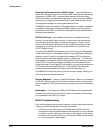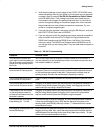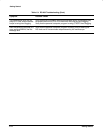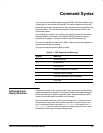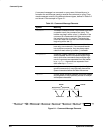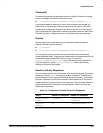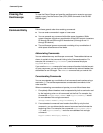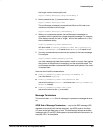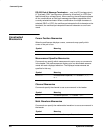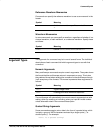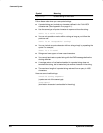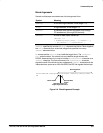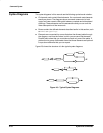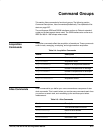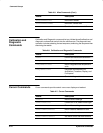
Command Syntax
TDS 310, TDS 320 & TDS 350 Programmer Manual
2Ć5
the longer version works equally well:
ACQuire:MODe ENVelope;:ACQuire:NUMAVg 4
3. Never precede a star (*) command with a colon:
ACQuire:MODe ENVelope;*TRG
The oscilloscope processes commands that follow as if the star comĆ
mand was not there so this is legal:
ACQuire:MODe ENVelope;*TRG;NUMAVg 2
4. When you concatenate queries, the oscilloscope concatenates reĆ
sponses to all the queries into a single response message. For example,
if the display intensity for text is bright," and for the waveform it is dim,"
the concatenated query
DISplay:INTENsity:TEXt?;WAVEform?
will return either :DISPLAY:INTENSITY:TEXT BRI;:DISPLAY:IN-
TENSITY:WAVEFORM DIM if header is on, or BRI;DIM if header is off.
5. You may concatenate set commands and queries in the same message.
For example:
ACQuire:MODe NORMal;NUMAVg?;STATE?
is a valid message that sets the acquisition mode to normal, then queries
the number of acquisitions for averaging, and the acquisition state. The
oscilloscope executes concatenated commands and queries in the order
it receives them.
Here are some invalid concatenations:
H DISPlay:INTENsity:TEXt BRI;ACQuire:NUMAVg 16
(no colon before ACQuire)
H DISPlay:INTENsity:TEXt DIM;:WAVEform BRI
(extra colon before WAVEform - could also use DISPlay:INTENsity:
WAVEform instead)
H DISPlay:INTENsity:TEXt DIM;:*TRG
(extra colon before a star (*) command)
Message Terminators
This manual uses <EOM> (End of message) to represent a message terminaĆ
tor.
GPIB End of Message Terminators Ċ may be the END message (EOI
asserted concurrently with the last data byte), the ASCII code for line feed
(LF) sent as the last data byte, or both. The oscilloscope always terminates
messages with LF and EOI. White space is allowed before the terminator; for
example, CR LF is acceptable.



